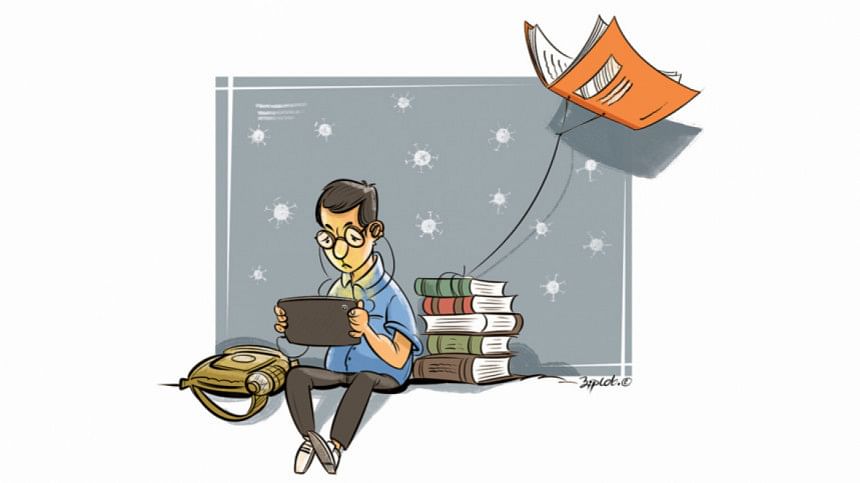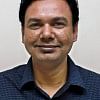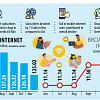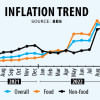Literacy rate: 5 districts fall far behind the rest

The literacy rates in Jamalpur, Sherpur, Bandarban, Sunamganj and Kurigram are significantly lower than the country's average.
According to data from the preliminary Population and Housing Census 2022 report, Bangladesh's average literacy rate among those aged seven and above is 74.66 percent. This shows an increase by 22.89 percent since the previous census conducted in 2011, in which the literacy rate stood at 51.77 percent.
However, the aforementioned five districts have the lowest rates this time.
Jamalpur's literacy rate was 61.52 percent – 13.13 percent lower than the national average.
Meanwhile, 63.57 percent of the people in Sherpur, 63.64 percent in Bandarban, 64.77 percent in Sunamganj, and 64.99 percent in Kurigram cannot read or write.
Officials of the Bureau of Non-Formal Education (BNFE) working in these districts cited a host of factors owing to the staggeringly low literacy rates.
Those factors include extreme poverty, a lack of awareness and also an absence of district-wide literacy projects, as well as continuous efforts to continue those.
Bangladesh Bureau of Statistics said literacy is defined as the ability to read and write in any language.
Kazi Saifuzzaman, additional director of Jamalpur BNFE, said it was true that the district's literacy rate was much lower than that in other districts.
"We have a lot of char areas, and poverty there is the main reason for the low literacy rate. Most of the guardians are not educated, and many of them do not show interest in sending their children to schools.
"On the other hand, adults are also reluctant to join adult literacy programmes due to poverty. Parents instead send their children to farms for agricultural work."
Other BNFE officials too blamed the absence of continuous efforts for adult literacy programmes in these districts.
Manzur Ahmed, additional director of Bandarban BNFE, said the Basic Literacy Project, aimed at providing basic education to 7,000 people aged between 15 and 45, is currently in the implementation stage in his district.
"Before this, we didn't have any literacy project initiative for many years. We need continuous projects for the improving literacy rate."
While there are five upazilas in Jamalpur, the BNFE is currently implementing the "Out of School Children Programme as Second Chance Education", to provide non-formal education, in only Jhenaigati and Sherpur Sadar upazilas to 4,200 children aged 8-14.
"It would have been great if we had been able to cover the three other upazilas -- Nakla, Nalitabari and Sreebardi," said Syed Moktar Hossain, additional director of Sherpur BNFE.
He said that as part of an earlier literacy programme, they had provided basic education to 18,000 adults of each Naliatbari and Jhenaigati, and 22,000 adults of Sreebardi.
"The programme helped push up the literacy rate several years ago."
Poverty is another big factor, he added.
"If a child works at a bidi factory, they might get Tk 1,000-1,500, while the school stipend is a meagre amount. To encourage children to come to school, the stipend amount has to be increased."
Razu Kumar Sarkar, additional director of Sunamganj BNFE, said the out-of-school-children project is currently benefitting 4,200 children with non-formal education in two of the 12 upazilas.
Jamalpur BNFE's Kazi Saifuzzaman and Sherpur BNFE's Syed Moktar Hossain suggested continuous literacy programmes that should also provide skills development training for jobseekers.
Moktar also said social movements, commitment from political leaders, and formations of union literacy committees are needed to help increase the literacy rates in the districts falling behind.
Nuruzzaman Sharif, acting director general of BNFE, said the basic literacy project was recently completed and another such programme providing non-formal education is being implemented.
"So, the districts falling behind, along with the rest of the country, will see improvements in terms of literacy rates.
"Currently, we do not have upazila level officials. So, we will have to chalk out new initiatives to improve countrywide literacy rates."
According to the 2022 census, the literacy rate in the urban areas is 81.28 percent, while in rural areas, it is 71.56.
The rate is higher among the male population, which is 76.56 percent. Among the female population, it is 72.82.
The highest literacy rate – 78.09 -- was in Dhaka division.

 For all latest news, follow The Daily Star's Google News channel.
For all latest news, follow The Daily Star's Google News channel. 








Comments